Last week we embarked upon part one of a virtual tour of the Anne Bronte exhibition at the Brontë Parsonage Museum in Haworth. We looked at Anne items and ephemera within the old Brontë parsonage itself, but today we will look at the main body of the Anne Brontë exhibition, contained in a series of display cases in the Bonnell Room next to the museum shop.
Sadly, on my latest visit I didn’t manage to get a close up picture of the first display case, but here’s an image from my earlier visit in January. It’s a stunning start to the ‘Amid The Brave And Strong’ exhibition because it contains two fine examples from Anne Bronte’s necklace collection, made of carnelian and turquoise:
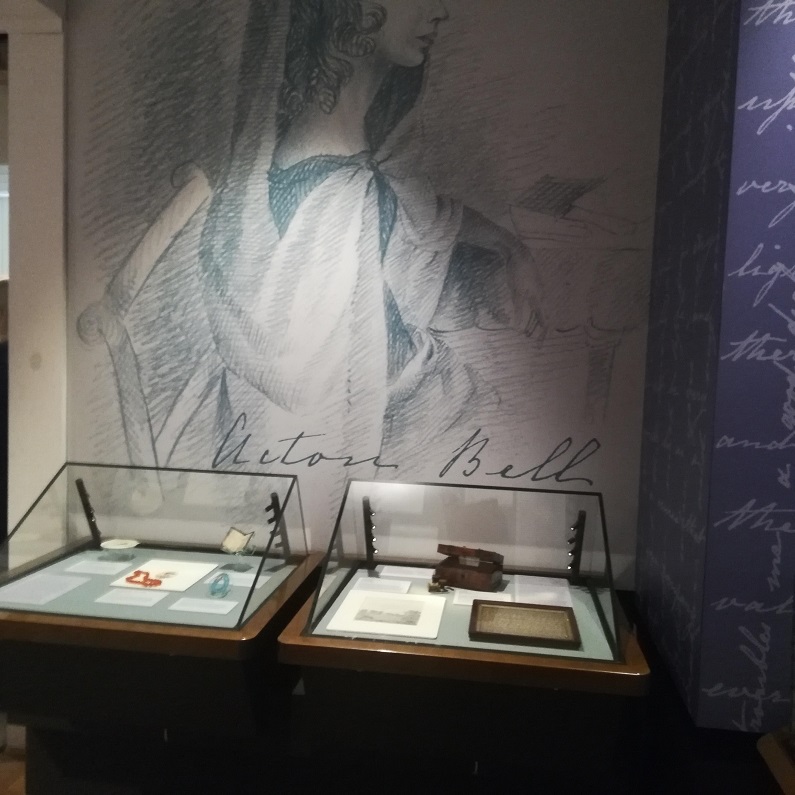
Here we see examples of Anne’s precocity, including a sampler created at just eight years of age, and a sketch of Roe Head in Mirfield, the school she entered aged 15.
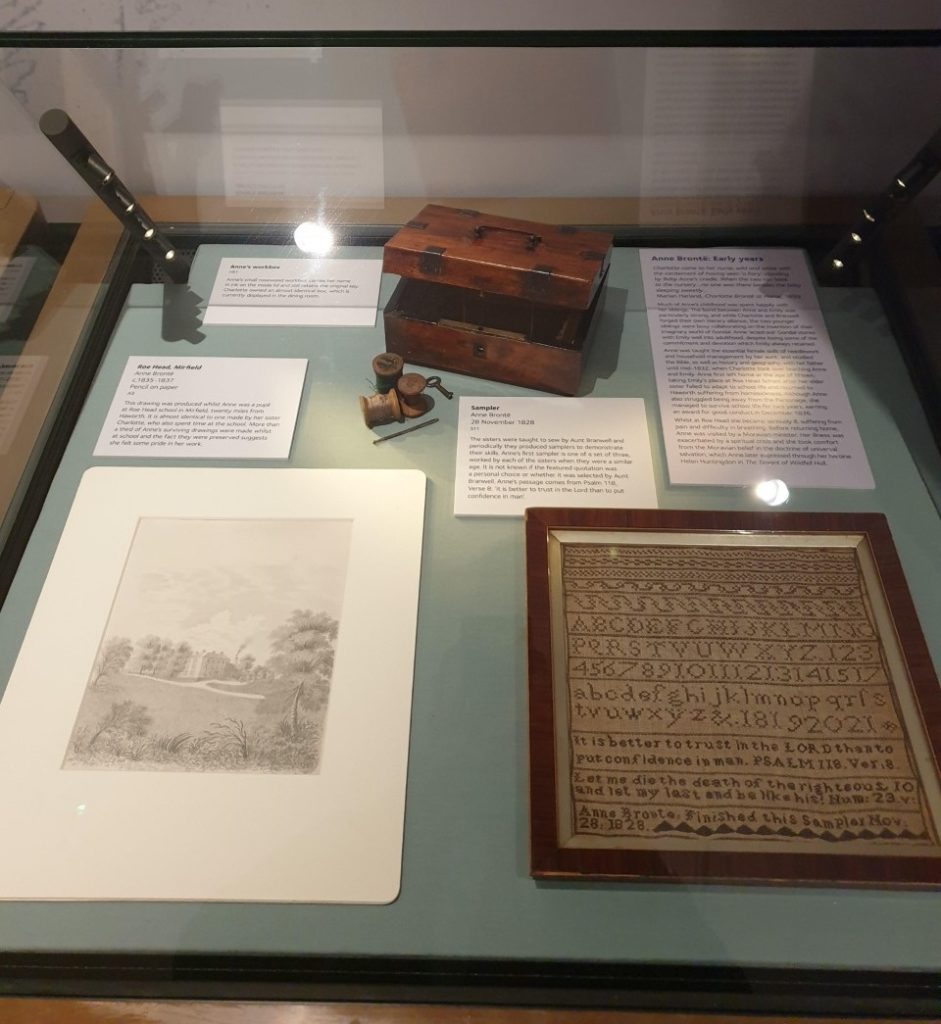
In last week’s post we saw three images of Anne’s beloved spaniel, two by Anne herself and one by Emily. Centre stage here is another image of Flossy, along with his collar. Note that I call Flossy a ‘he’: sometimes the spaniel is referred to as female due to a puppy called Flossy Junior being given to Ellen Nussey, but there are no references to any other puppies around the parsonage so it seems likely that Anne’s four legged friend was the father rather than the mother. Here also we have Anne’s German language textbook; Anne was an excellent linguist, and the only Brontë sister who could read Latin and Greek.
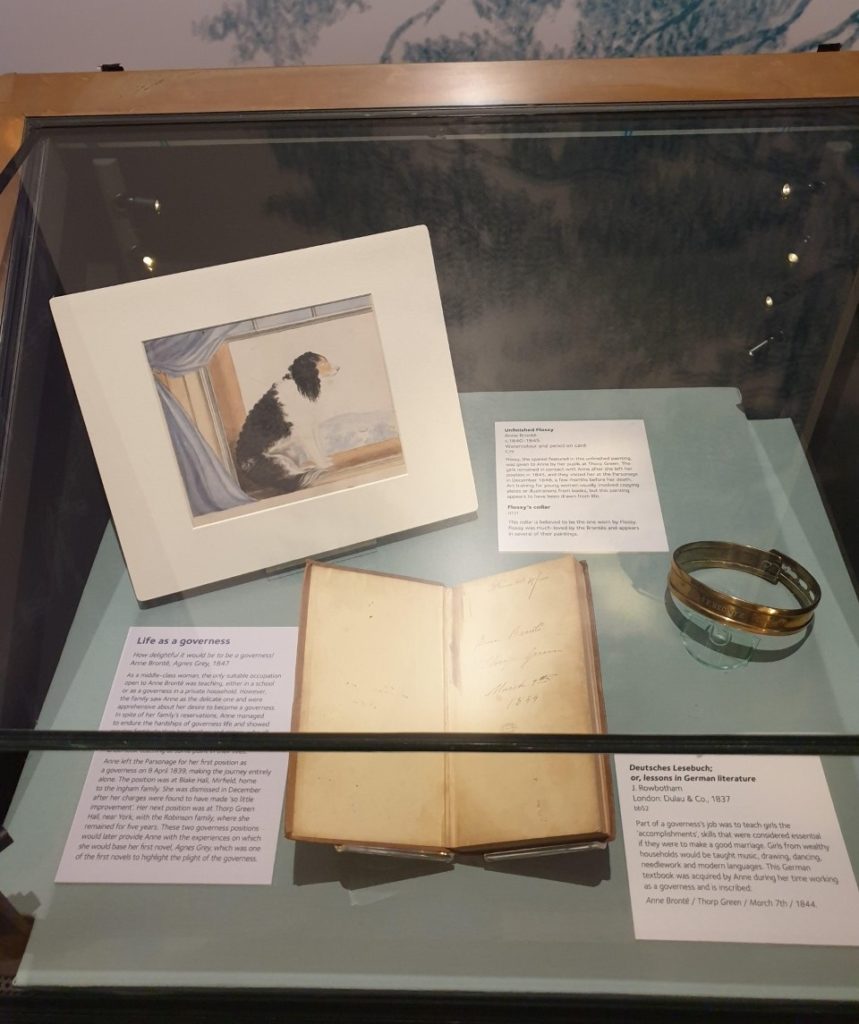
Here we see the only signature of Anne Brontë under her pseudonym Acton Bell. According to Charlotte (whose ‘Currer Bell’ signature can also be seen here) their first book, Poems by Currer, Ellis and Acton Bell, sold only two copies. One of the purchasers, however, a Mr Enoch, was so impressed that he wrote via the publisher to ask for their autographs.
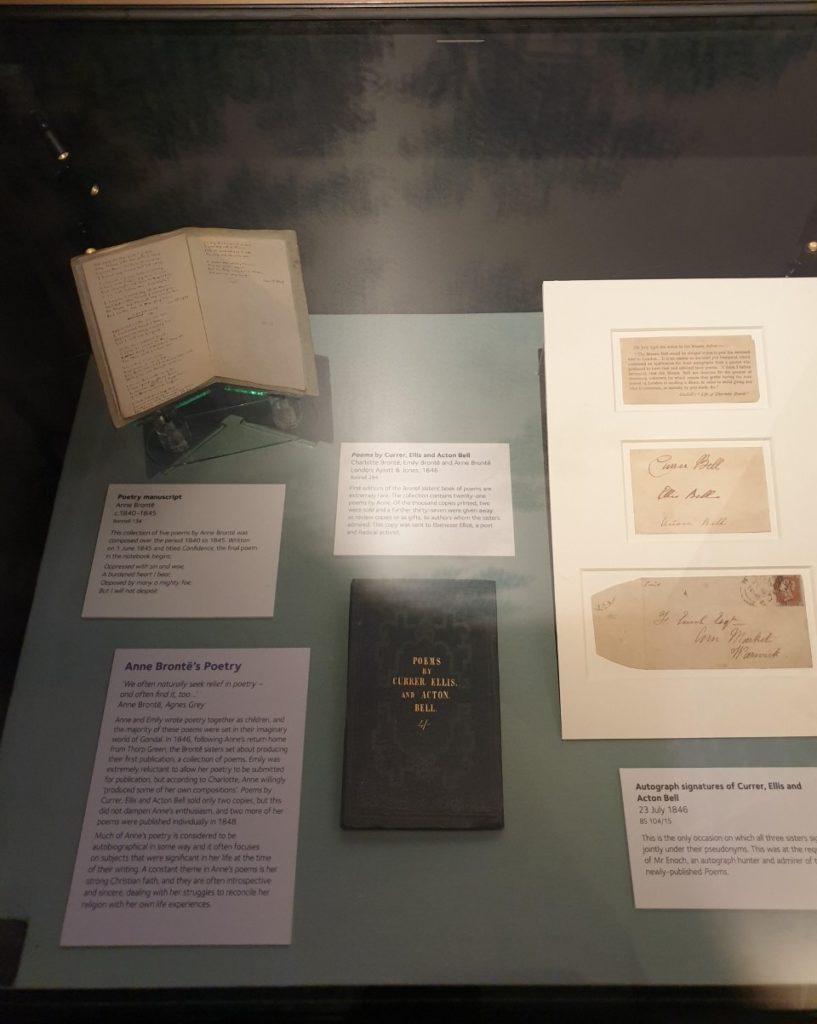
Anne was a wonderful artist, as indeed were all the siblings, and perhaps her most popular artwork is ‘Woman gazing at a sunrise over the sea’ shown in the display case above. It’s easy to think that this represents Anne herself at her beloved Scarborough, but in fact had seen neither Scarborough nor the sea at the time she drew this in 1839.

My personal favourite artwork of Anne’s is ‘What You Please’ pictured below, as I believe it’s an Anne Brontë self-portrait. This case also contains a first edition of Wuthering Heights and Agnes Grey, published together in 1847. It was perhaps fitting that the two sisters, Anne and Emily Brontë, who were so close to one another, and whose arms were to be seen constantly entwined in their childhood, should find their remarkable novels published side by side in adulthood.

Another beautiful drawing by Anne, along with her groundbreaking novel The Tenant Of Wildfell Hall which is still relevant and powerful today. This is a particularly moving copy of the book as it was Anne’s own copy which she presented to her friend Ellen Nussey in January 1849. It was just a month after Emily’s death from consumption, and Ellen walked Anne around the room as she waited for the verdict of a doctor’s consultation: the verdict when it came was a terrible one, Anne had just weeks or months to live. Ellen remembered the visit at which she was presented this book: ‘Anne was looking sweetly pretty and flushed, and in capital spirits for an invalid. While consultations were going on in Mr Brontë’s study, Anne was very lively in conversation, walking around the room supported by me. Mr Brontë joined us after Mr Teale’s departure and, seating himself on the couch, he drew Anne towards him and said, “My dear little Anne.” That was all – but it was understood.’
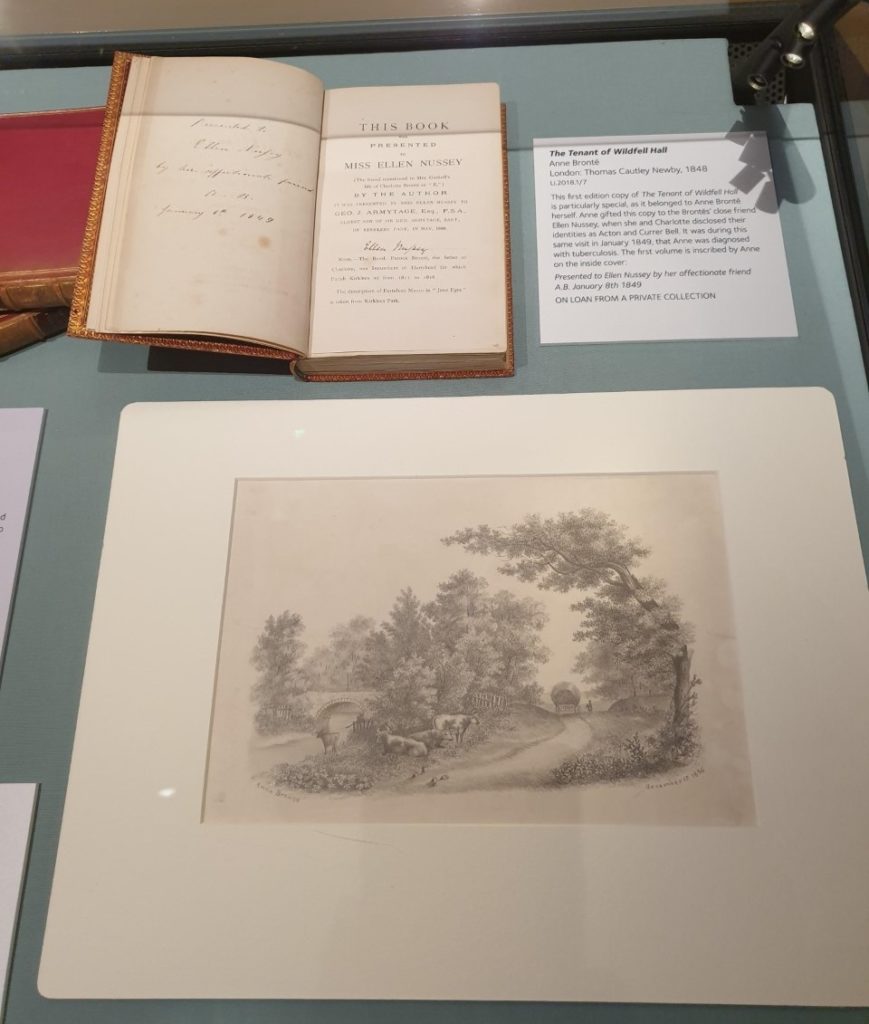
Contemporary critics were extremely harsh about the writing of Anne and her sisters, but she faced up to them and hit back in her famous preface to the second edition of The Tenant Of Wildfell Hall. Her message was, and is, a simple one: truth is all that matters. We also see a Brontë inkwell and one of Anne’s quills – it’s incredible to think that they wrote their novels using these instruments, and often by candlelight.
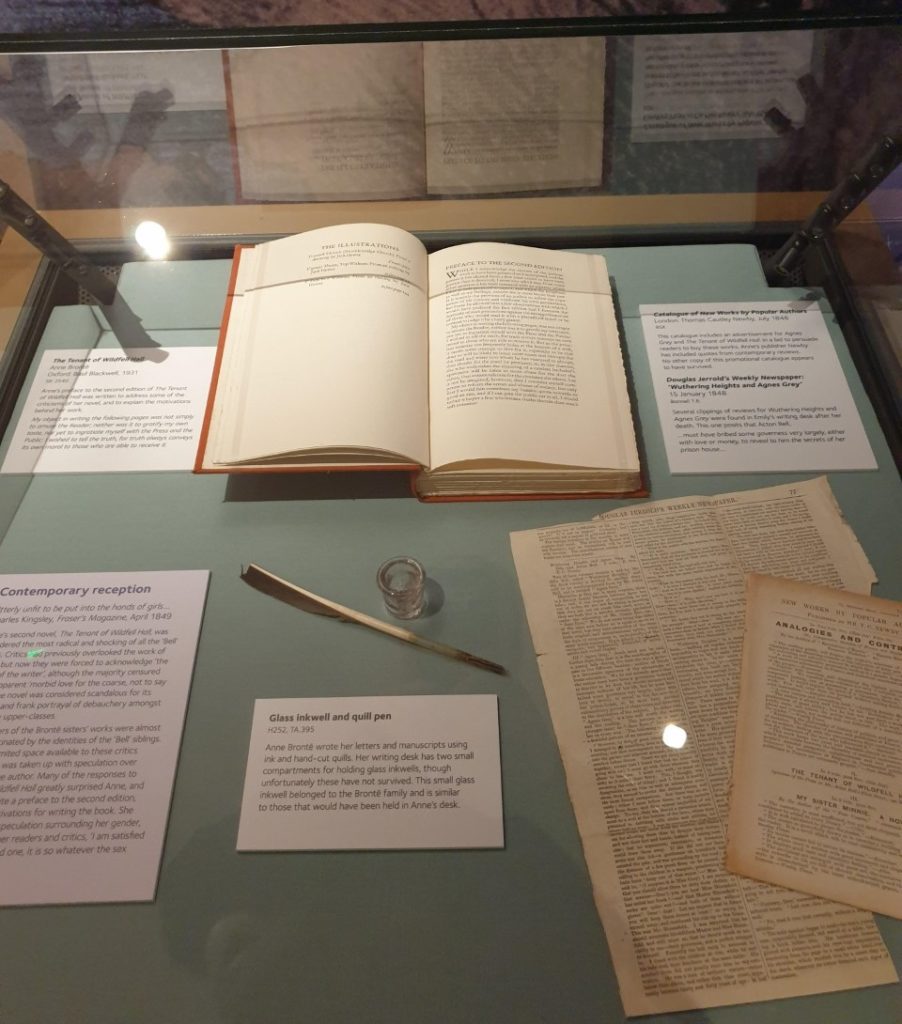
In this very moving display case we see Anne’s handkerchief bearing her hand stitched initials and stained by her blood, a symbol of the bloody coughing associated with tuberculosis. Here also is Anne’s last letter, to Ellen Nussey asking her to accompany her to Scarborough. Even at this time, when she had little need to preserve paper or money, Anne writes using the frugal ‘crossed letter’ style, meaning that you had to read the letter both vertically and horizontally. The paper is black bordered as Anne is still in mourning for Emily.

‘Last Lines’ was the title given by Charlotte Brontë to this, Anne’s final poem, after her sister’s passing. I believe, however, that Anne had also been working on a philosophical essay, one that is published for the first time in book form in my book Crave The Rose: Anne Brontë At 200, and that those were her actual last lines.
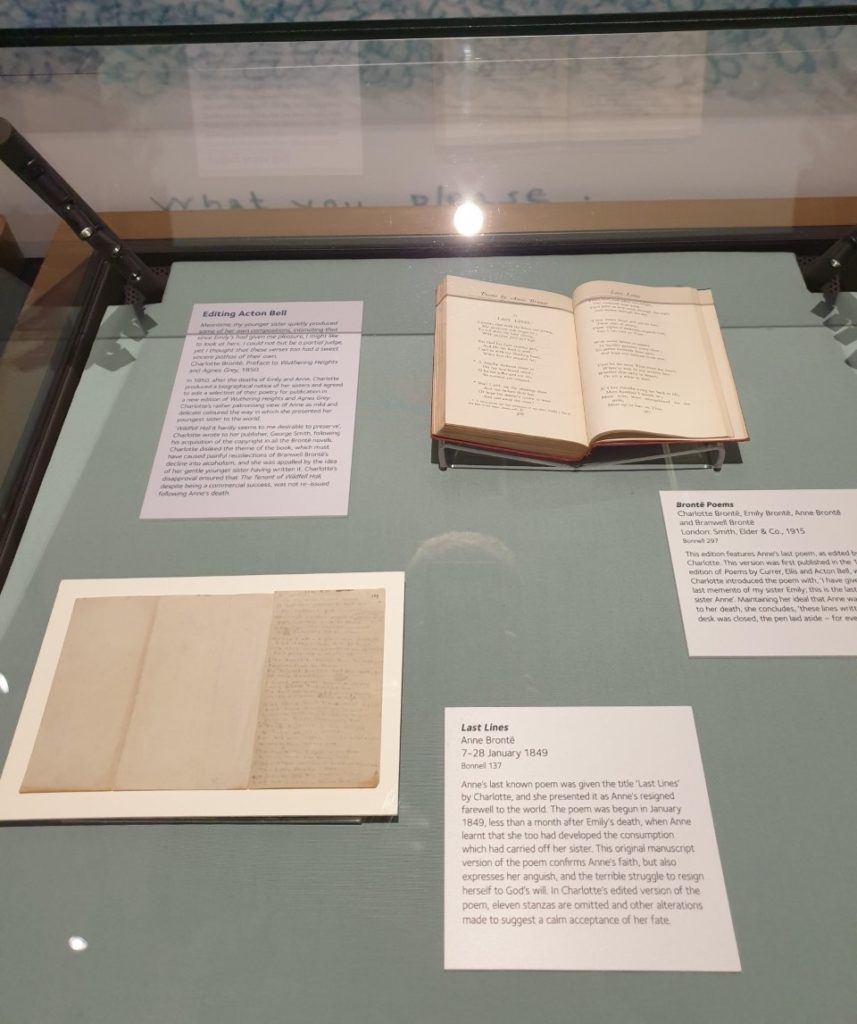
The exhibition closes, as all such retrospectives must, on a sad note of finality, and yet we can still remember the joy that Anne Brontë brought to so many people and which she will continue to bring, whatever challenges our little planet faces. I hope you’ve enjoyed my virtual tour of the Brontë Parsonage Museum’s exhibition, ‘Amid The Brave And Strong’ is a fine and fitting tribute to Anne Brontë in her 200th birthday year. I hope you enjoyed this virtual tour, and don’t forget that, if you wish to do so, you can donate to the Brontë Parsonage Museum in Haworth via this link. I hope to see you all again next Sunday for another new Brontë blog post.
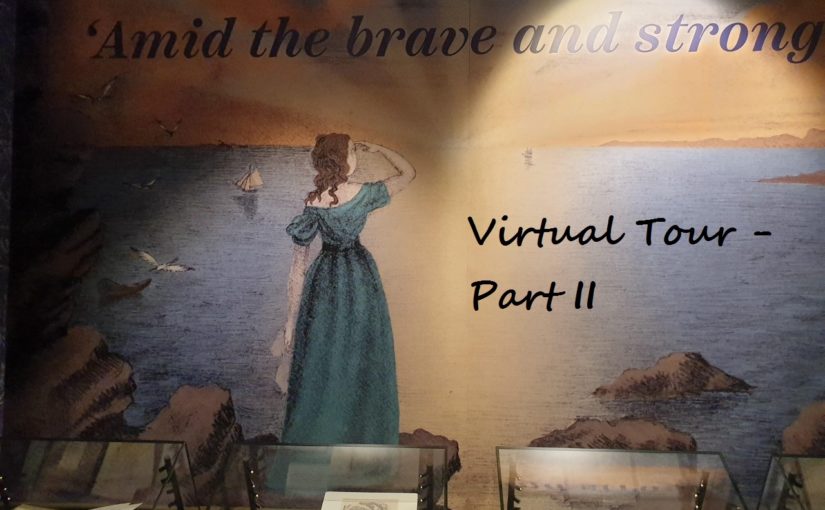
Thank you. Fascinating again! So interesting especially at a time when we can’t get out much. It amazes me how clever and intelligent the sisters were. Everything was not on a plate for them, yet they achieved so much.
Thank you very much it brought a tear to my eyes lovely historical pictures and Anne was very clever young person and i admire very much as well as her 2 sisters thank you so much for sending these lovely articals
Thank you very much for this! I am so grateful! I hope to visit it myself some day. Have a nice week and stay healthy!
THANK YOU!!! You write so well, explaining the context and giving background information… And the photos almost made me feel like I was there. Great post!
What a woman she was!
And the blood stained handkerchief really broke my heart!!
Thank you Lara! Yes, that handkerchief always upsets me.